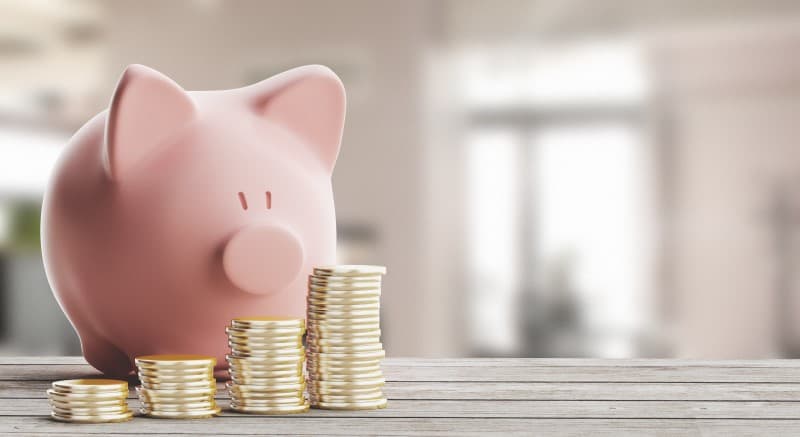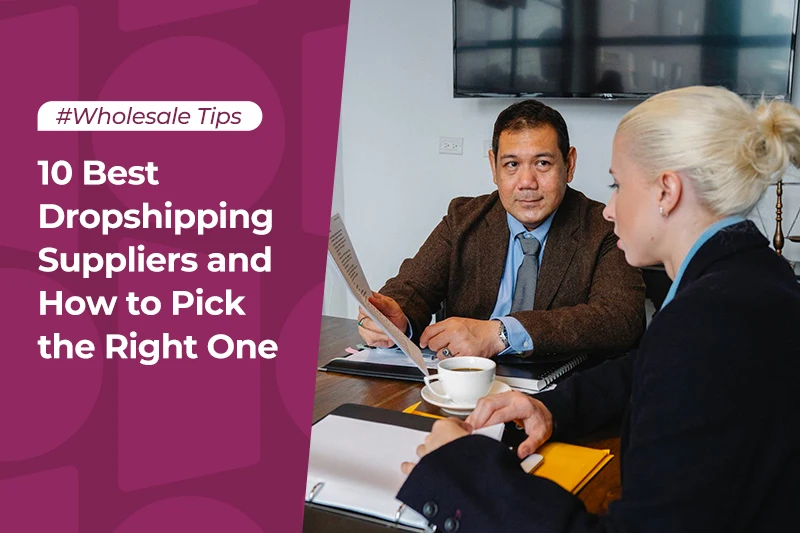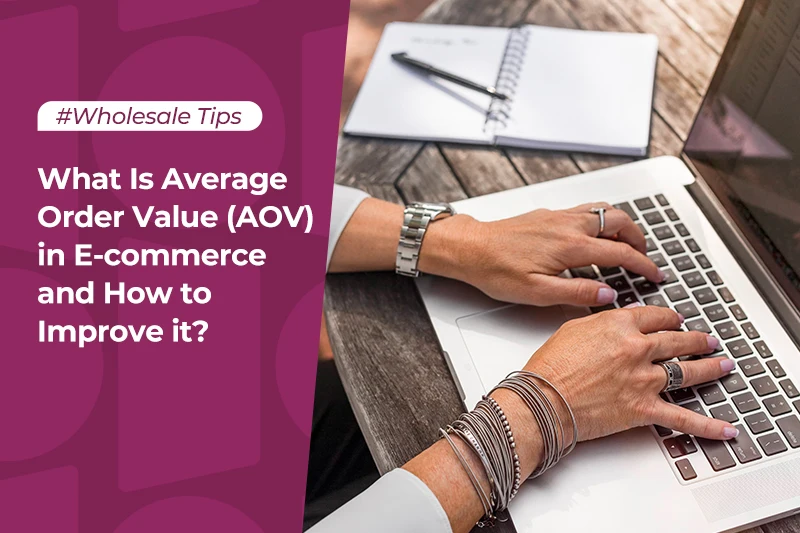How to calculate wholesale price: the beginner's guide

Due to the various factors, pricing can be a challenge for wholesale business owners. Setting the price too high could make you risk alienating your customers. But if you set the price too low, you may not only diminish the value of your product but also damage your chances of turning a profit.
As a result, finding the right pricing strategy can be critical for business success. This is why successful sellers spend the time and effort it takes to get it right.
Are you just starting out in your wholesale business, or do you have a new batch of products you want to ensure are priced right? This guide explains all you need to know about wholesale pricing, as well as formulas and strategies you can apply towards finding the right price.
Table of Contents
What is wholesale pricing?
Wholesale pricing involves setting a price for goods at the wholesale stage of selling. The wholesale price is typically charged by a manufacturing company when it wants to sell to bulk distributors or retailers. This price may also be set by a bulk distributor when finalizing a sale to smaller retailers.
At the wholesale stage, goods are usually sold in large quantities, so the wholesale price is set at the lowest rate possible to enable other stakeholders in the supply chain to enjoy a margin of profit.
Even with a dramatically low-price rate, wholesale manufacturers can get benefits from a huge amount.
This ensures that the retail price is not unreasonably high. Therefore, the eventual goal of wholesale pricing is to ensure a good balance between creating a healthy business, and enjoying a tidy profit.
There are many considerations that you should keep in mind when setting a wholesale price. Not only should you be able to recoup the costs of producing and storing the goods, but enjoy a profit from the sale of the goods. While doing this, you should also consider the average market price for the product, the nature of demand, what your competitors are doing, and many other factors.
All of this makes the process of setting wholesale prices a delicate task. Sometimes, getting the right mix depends on identifying what a fair retail price for the product would be, and then working backward from there.
We’ll discuss more about this below, starting with the differences between the wholesale price and retail price.
Wholesale price vs retail price
Compared to the wholesale price, retail price is essentially the final price of the product. It is the price that the final consumer pays for the product, usually when they buy in-store or online.
Just as the wholesale price is set by a wholesaler, the retail price is set by a retailer who maintains a physical store, or an online storefront. Sometimes, wholesalers may recommend a retail price.
What they recommend in this case is usually called the recommended retail price (RRP) or manufacturer suggested retail price (MSRP). But the retailer has ultimate control over the final price.
Retail prices typically have a higher mark-up and profit margin compared to wholesale prices. This is because they will need to include additional costs of selling in the final price. These costs include advertising, rent, salaries, cost of showrooms, etc. They typically add a 100% mark-up to the wholesale price, using a strategy called keystone pricing.
Wholesale prices also tend to vary with the quantity bought. Bulk distributors may offer a slight discount for larger orders.
But retail prices are generally constant no matter the quantity of goods bought. Although, a retailer may offer a discount to encourage sales, especially when sales are not moving as fast as they want.

How to calculate wholesale pricing
Now that you understand what wholesale pricing is, and how it differs from retail pricing, let us turn to how to determine wholesale pricing.
The first step to take here is to thoroughly research your market. Research of this nature is called pricing market research1, and it is used to answer questions such as: Who are your customers? How have they interacted with your products, or similar products, in the past? Who are your competitors? What are the current pricing trends in the market? Your answers to these questions will give you valuable insight on how to approach the task of setting a price.
After answering these questions, you can move next to identifying the strategies you want to apply in setting your wholesale price. Below, we will explain common pricing strategies that wholesalers use to set their wholesale price, and how to reach your own price.
Strategies for calculating wholesale price
Different businesses adopt different approaches to wholesale pricing. But often, what determines the strategy is a mix of what their market research indicates, and the goals of the business for how they want to sell. Here are some of the wholesale pricing strategies that you can utilize:
1. Absorption pricing
This is a cost-based pricing strategy. Here, you aim to absorb all of the costs of manufacturing or procuring the goods into the price. You determine the costs, and then add a mark-up on top.
This is why it is also called cost-based or cost-plus pricing. One of the advantages of this strategy is its simplicity. Also, it ensures you can enjoy consistent returns, so long as the costs remain constant.
But if costs change, you may have to adjust the wholesale price. Another disadvantage is this strategy does not take market conditions, such as competitor strategy or demand patterns, into account.
2. Differentiated pricing
Differentiated pricing is a demand-based pricing strategy. This strategy is very flexible, meaning that your pricing changes according to the situation.
Where competition is low, you may decide to set a price higher than average market figures. Or, you may set a price lower than the market average, if you want to sell more products within a short period of time.
Another possibility is to reward customers who buy higher quantities with reduced pricing. Using this flexible strategy means you can always change things to suit your circumstances. But you should only do this if you’re ready to stay agile and flexible enough to change quickly.
3. Value-based pricing
Although value-based pricing is a bit similar to differentiated pricing, it focuses on finding out what people are willing to pay for your product.
Only, in this case, the goal is to keep prices high. If your research indicates that customers view your products as a luxury, you may set a premium price.
People are willing to pay more for products they think are worth the price, as the research shows2. The disadvantage of setting high prices is that there may be a smaller market for your products.
4. Competitive/market-based pricing
As the name suggests, this strategy uses competitor pricing as a benchmark.
You may either set prices at a similar rate as your competitors or price your product below theirs in order to attract more wholesale buyers. This strategy works best in industries with very similar products, such as electronics.
If you are able to manage your costs effectively, while selling at a lower price, you stand a chance of making brisk sales and good profits. But this strategy may be difficult to implement and sustain for smaller wholesalers or those who are just starting out.
However, you may be able to manage this by implementing a minimum order quantity (MOQ) that we will talk more about later.
5. Bundle pricing
You may have seen this pricing strategy on product promos or in grocery stores. The strategy involves selling two or more products at a single price. You may slightly reduce the prices of both products, so the customer believes they are getting more products at a reasonable bundled price.
The strategy is proven to be effective, as this study about a Nintendo product indicates3. Nintendo found they were able to sell more units of their Game Boy console when the device was bundled with a game, than when it was sold as a standalone product.
But you must be careful with bundle pricing. If the bundle does not generate sufficient sales volume, you may end up taking a loss. Again, requiring your retail buyers to purchase a minimum order quantity may be helpful here.
⭐Tip: Although many of these strategies will apply in different circumstances, you don’t necessarily have to stick with only one. You can try one or more strategies to find your best fit before deciding which option to go with.
Wholesale price calculation formula
After you determine the strategy to apply, you’re ready to start thinking about calculating the wholesale price.
To determine your wholesale price, you need to figure out two important things – the average cost of manufacturing or procuring your products, and your preferred profit margin.
With these two figures, you then add them up, and the answer will be your wholesale price. Here’s what the formula looks like:
average cost of goods manufactured + profit margin = wholesale price
The average cost of manufacturing or procurement includes every single cost involved in making the products available4. This includes the cost of materials, labor, overhead, administrative expenses, shipping, and any other cost you incurred. We’ll explain how to calculate this below.
Your profit margin5, on the other hand, is the percentage of profit you intend to enjoy on each product. Profit margin mostly involves determining what retailers would likely charge for your product, and then deciding on a fair figure that’s somewhere in between.
Now, let’s break this formula down into steps you can begin to implement today.

Step by step guide to calculating your wholesale price
As we mentioned above, you should have done your market research before getting to this point. With the information the research provides, you should then determine what strategy you want to implement.
Deciding on a pricing strategy early will help direct your efforts in determining what your price should be. For instance, if you want to implement a value-based strategy, you should aim for a price around 2 to 3 times your average cost. Other strategies typically aim for between 0.2 to 2 times the average cost.
With that settled, you can proceed to crunch out the figures that determine your wholesale price. Here are the steps to take:
Step 1: Calculate your total cost of goods manufactured (TCGM). This is calculated by adding up all of your input costs, including labor, overhead, materials, and capital costs. Here’s what the formula looks like:
labor + overhead + materials + (any other applicable costs) = TCGM
Step 2: Determine the average cost of goods manufactured (ACGM). To calculate this, divide the TCGM by the number of units manufactured or produced. This gives you the cost of producing a single unit of goods. The formula is:
TCGM / number of units = ACGM
Step 3: Determine your profit margin. To simplify, profit margin is the gross profit that you can get by selling each product. Usually, the profit margin is measured by percentage. You can determine the profit margin percentage on your own. Usually, for wholesalers, they aim the profit margin percentage around 30-50%.
Step 4: Take the figures you determined for ACGM and profit margin percentage, then calculate to get your wholesale price. Here is the formula:
ACGM / (1-profit margin percentage) = Wholesale Price
Here is a quick example of how the formula works. XYZ Limited is a bulk distributor of fancy paperweights and wants to set a fair price for its products. Its costs are $6,000 for procuring 50 units of paperweights from the manufacturer, $500 for shipping, and another $500 for overhead and labor. It wants to pursue a value-based pricing strategy.
To calculate its wholesale price, we’ll first need to determine the TCGM. The costs of procurement will be $6,000 + $500 + $500 = $7,000. Next, we have to calculate the ACGM. This will be $7,000 / 50 = $140.
Now, we need to determine the profit margin percentage. For example, XYZ wants to have a 30% of profit margin percentage.
In this case the wholesale price will be $140 / (1-0.3) = $200
How to calculate profit margin percentage, mark-up, and minimum order quantity
After figuring out your wholesale price, you should also calculate your mark-up and profit margin percentages. These help you understand the percentage difference between your costs and profits. We’ll explain both here, as well as when requiring a minimum order quantity will be useful, and how to calculate it.
Profit margin percentage
This is calculated by subtracting your ACGM from the wholesale price and then dividing this by the wholesale price. Multiply the answer by 100 to get the percentage figure. The formula is:
(wholesale price – ACGM) / wholesale price x 100 = profit margin percentage
Mark-up percentage
The mark-up percentage calculates the percentage gain you enjoy on the cost of each product. It is calculated by subtracting your wholesale price from the ACGM, and then dividing this by the ACGM. Again, multiply the answer by 100 to get the percentage figure. Here’s the formula:
(wholesale price – ACGM) / ACGM x 100 = mark-up percentage
Minimum order quantity
We mentioned the possibility of requiring a minimum order quantity (MOQ) above, especially when you want to increase the value or quantity of your orders.
How do you tell if you need to set an MOQ? First, determine your average order value (AOV). You can calculate this by dividing the overall number of units sold by your total orders received. The formula is:
total number of goods sold / total orders received = AOV
Then see if the AOV is sufficient for you to not only breakeven but also enjoy a healthy profit. This means the AOV must be able to cover all of your costs, and your profit margin.
If it does not, you may need to set an MOQ. Due to the fact that the MOQ varies depending on your needs, the nature of your products, your retail buyers, and many more factors, there is no single formula to calculate the ideal minimum quantity.
But you can start by calculating how much demand you regularly get, the cost of storing the products, and your break-even point. These factors will help you determine what your MOQ should be.
Common challenges when determining wholesale price
Clearly, there’s a lot that goes into determining, calculating, and deciding on a wholesale price. Because of this, many business owners regard this as one of the most difficult parts of selling. But there are many other challenges that wholesalers may face when setting their wholesale price.
- Brand identity and positioning: Pricing is the key to how your customers view your business and the value of your products. But finding the perfect balance between a price that reflects the value of your products and a price that buyers will be willing to pay can be challenging.
- Competition: In certain industries, competition between wholesalers can be quite steep. This means you must either be content to price your goods at the market rate, or go below this rate. But this might spark a price war, forcing prices even lower.
- Seasonality: Certain products are seasonal in nature, meaning they have periods of high demand followed by periods of low demand. Keeping your pricing strategy up to date can be stressful, especially if other factors also affect the seasons.
- Discounts: Discounts can be a powerful sales tool6. But they must be used strategically. Provide shallow discounts, and customers may not be tempted to bite. But provide too-steep discounts, and you may erase all your profits.
A successful wholesale distribution business always facing various challenges, and business owners always regard pricing as one of them. But with the right tools and a good understanding of how wholesale pricing works, you are in a better position to set wholesale prices that benefit you.
Sell wholesale online on Alibaba.com
Alibaba.com provides a global online marketplace where you can sell to consumers and retailers from all over the world. We provide all the tools, resources, and support you need to grow wholesale business online and reach more than 14 million retail buyers.
Want to learn how selling on Alibaba.com works? Visit here to get started.
References:
1. https://whatismarketresearch.com/market-research-process/what-is-pricing-research/
2. https://www.psychologytoday.com/us/blog/one-among-many/201612/beer-the-beach-and-other-priceless-tales
3. https://hbswk.hbs.edu/item/better-by-the-bundle
4. https://corporatefinanceinstitute.com/resources/knowledge/accounting/cost-of-goods-manufactured-cogm
5. https://www.investopedia.com/terms/p/profitmargin.asp
6. https://www.softwareadvice.com/resources/retail-pricing-strategies-report-2015/
Start your borderless business here
Tell us about your business and stay connected.
Keep up with the latest from Alibaba.com?
Subscribe to us, get free e-commerce tips, inspiration, and resources delivered directly to your inbox.














